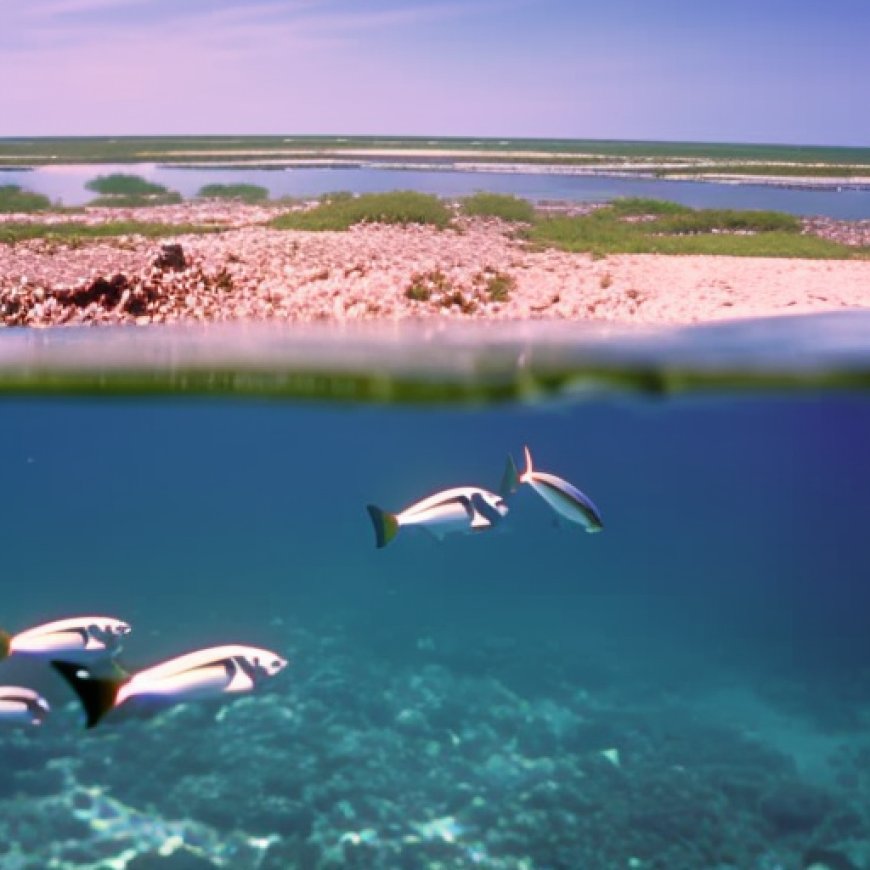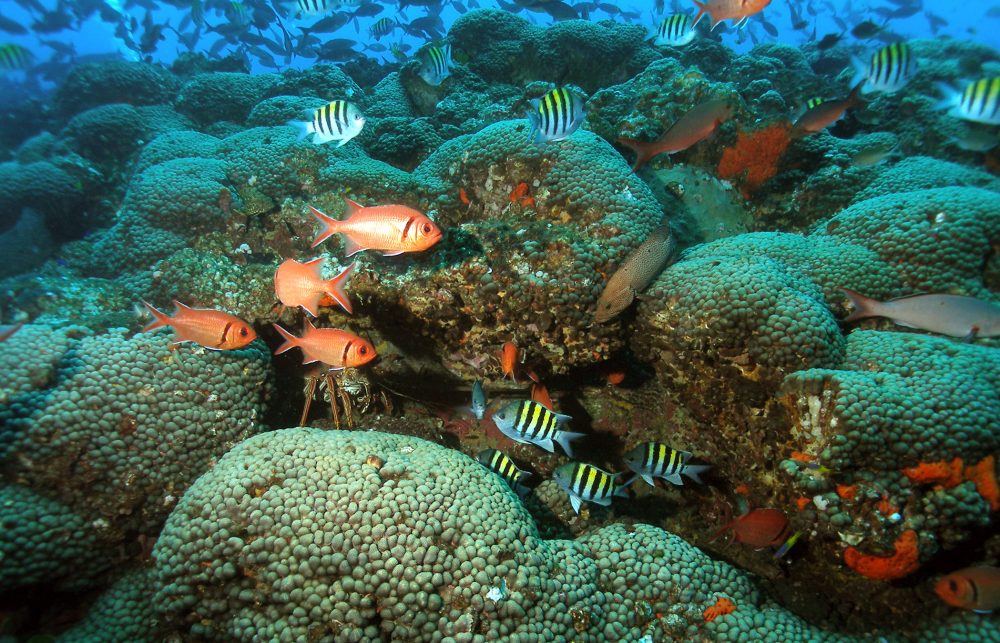A marine sanctuary 100 miles off the Gulf Coast is one of the healthiest as ocean temperatures rise | Houston Public Media
A marine sanctuary 100 miles off the Gulf Coast is one of the healthiest as ocean temperatures rise Houston Public Media


A Coral Reef Off the Texas Gulf Coast Thrives Amid Global Coral Bleaching Event

Introduction
- A coral reef 100 miles off the Texas Gulf Coast is thriving amidst the fourth global coral bleaching event.
- Coral bleaching occurs when corals are stressed by changes in conditions like temperature, light, or nutrients, making them more susceptible to disease.
The Depth Advantage
- The depth of the Flower Garden Banks Marine Sanctuary in the Gulf of Mexico has helped the reef avoid extreme bleaching seen in other areas.
- The reef is almost 60 feet deep in the shallowest parts, while reefs in other areas can be as shallow as five feet.
Expert Insights
- Michelle Johnston, the Sanctuary Superintendent for the Flower Garden Banks, explains that shallow reefs have a harder time with rising ocean temperatures.
- While bleaching does occur in the Flower Garden Banks, it is not as extensive as in the Florida Keys.
Recorded Coral Bleaching Events
- Coral bleaching was first observed in the 1980s, and the longest and most damaging event on record occurred from 2014 to 2017.
- Researchers are exploring light therapy and methods to cool down water near reefs to mitigate bleaching.
Efforts to Combat Climate Change
- Aquariums like Moody Gardens are studying corals that are more resistant to heat and working towards helping coral reefs adapt to climate change.
- El Niño can increase the risk of coral bleaching, while hurricanes can sometimes benefit reefs.
Influence of Watershed and Storms
- The Gulf of Mexico receives water from two-thirds of the U.S., Eastern Mexico, and part of Canada’s watershed, which can bring muddy water to the gulf.
- While storms can introduce pollutants, they can also prevent bleaching events and help clean the ocean.
Recommendations for Conservation
- The NOAA recommends reducing water and electricity usage, recycling, and responsible trash disposal to support aquatic ecosystems.
- Activism, attending scuba events, and visiting local aquariums can also contribute to coral reef conservation.
Conclusion
- The Flower Garden Banks National Marine Sanctuary is a national treasure and a safe haven for wild corals, with a healthy ecosystem and thriving fish communities.
SDGs, Targets, and Indicators
1. Which SDGs are addressed or connected to the issues highlighted in the article?
- SDG 14: Life Below Water – The article discusses the health and preservation of coral reefs, which are a vital part of marine ecosystems.
- SDG 13: Climate Action – The article mentions the impact of rising ocean temperatures on coral bleaching and explores potential solutions to mitigate the effects of climate change on reefs.
2. What specific targets under those SDGs can be identified based on the article’s content?
- SDG 14.2: By 2020, sustainably manage and protect marine and coastal ecosystems to avoid significant adverse impacts, including by strengthening their resilience and take action for their restoration, to achieve healthy and productive oceans – The article highlights efforts to protect and preserve coral reefs, such as the Flower Garden Banks National Marine Sanctuary.
- SDG 13.3: Improve education, awareness-raising, and human and institutional capacity on climate change mitigation, adaptation, impact reduction, and early warning – The article mentions educational initiatives and research efforts aimed at understanding and addressing the impact of climate change on coral reefs.
3. Are there any indicators mentioned or implied in the article that can be used to measure progress towards the identified targets?
- Indicator for SDG 14.2: Percentage of coral reefs in good condition – The article discusses the health of the coral reef in the Flower Garden Banks National Marine Sanctuary, indicating that it is doing better than other reefs facing coral bleaching events.
- Indicator for SDG 13.3: Number of educational initiatives and research projects focused on climate change and coral reefs – The article mentions efforts by aquariums and research institutions to study and mitigate the impact of climate change on coral reefs.
Table: SDGs, Targets, and Indicators
| SDGs | Targets | Indicators |
|---|---|---|
| SDG 14: Life Below Water | 14.2: By 2020, sustainably manage and protect marine and coastal ecosystems to avoid significant adverse impacts, including by strengthening their resilience and take action for their restoration, to achieve healthy and productive oceans | Percentage of coral reefs in good condition |
| SDG 13: Climate Action | 13.3: Improve education, awareness-raising, and human and institutional capacity on climate change mitigation, adaptation, impact reduction, and early warning | Number of educational initiatives and research projects focused on climate change and coral reefs |
Behold! This splendid article springs forth from the wellspring of knowledge, shaped by a wondrous proprietary AI technology that delved into a vast ocean of data, illuminating the path towards the Sustainable Development Goals. Remember that all rights are reserved by SDG Investors LLC, empowering us to champion progress together.
Source: houstonpublicmedia.org

Join us, as fellow seekers of change, on a transformative journey at https://sdgtalks.ai/welcome, where you can become a member and actively contribute to shaping a brighter future.







